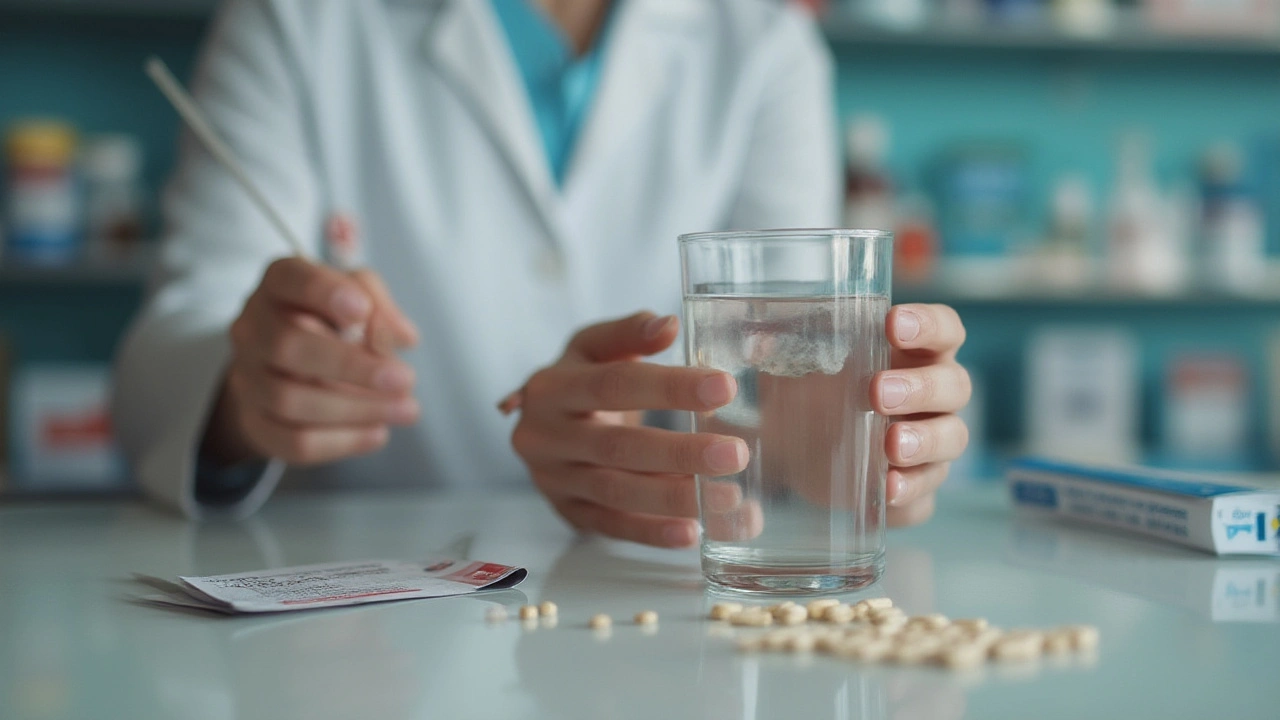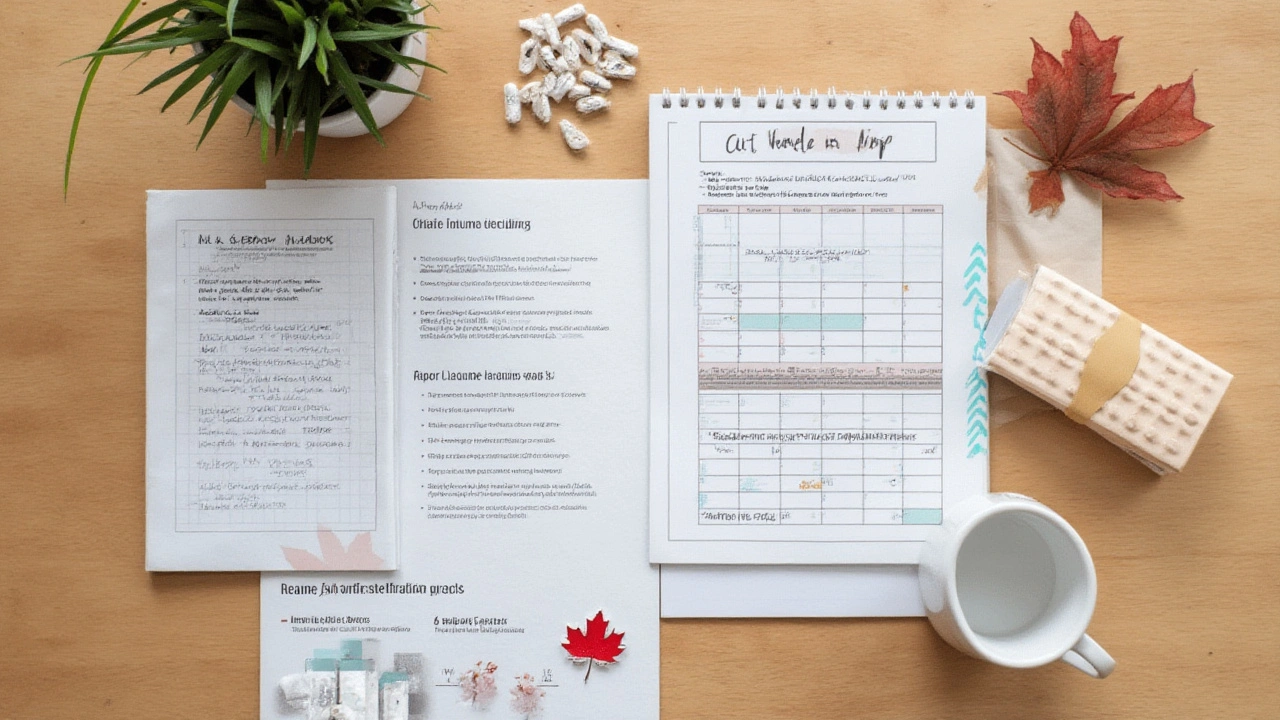Did you know the discovery of antibiotics changed human life more than the invention of the car? Diseases that once meant nothing but bed rest and bleak odds now stand a fighting chance. But even in 2025, old drugs like Sumycin are still making headlines in doctor’s offices from Auckland to Dunedin. The fact that a medicine launched in the 1950s remains relevant tells you it’s got some real punch—though not without its quirks and gotchas. Want to know what makes Sumycin such an established name on pharmacy shelves, and where it fits in today's world of superbugs and smart prescriptions? Keep reading, and you'll get a no-nonsense tour through what matters about Sumycin and how it might (or might not) fit your needs.
What Exactly Is Sumycin?
If you’ve been prescribed Sumycin, you've likely heard it tossed around as just another "antibiotic" on your doctor's shelf. But here’s the thing—Sumycin is actually the brand name for tetracycline, one of the oldest broad-spectrum antibiotics still in the playbook. What makes it interesting? Its ability to tackle a mix of bacteria that cause conditions from acne to chlamydia, and even some rare infections you’d probably only bump into on an off-the-grid backpacking trip.
Here’s how it works: Sumycin interferes with bacteria’s ability to make proteins. No protein, no reproduction, and the infection fades out. Unlike newer, more targeted antibiotics, Sumycin isn’t picky. It takes down a wide range of bugs: gram-positive and gram-negative, even some “atypical” ones. It’s been used for decades to treat respiratory tract infections (like bronchitis and pneumonia), urinary tract infections, acne, conjunctivitis, and quite a few diseases carried by ticks and lice, such as Rocky Mountain spotted fever and typhus.
The classic stature of Sumycin comes with a twist—it's only available by prescription in most countries. Doctors now tend to hold it back for cases where other, newer antibiotics aren’t working or aren’t safe, especially since resistance can build up if it’s overused. You’ll usually see Sumycin handed out when someone is allergic to penicillin or when dealing with stubborn acne that laughs at over-the-counter creams.
And even though it was discovered back in the era of black-and-white TVs, it scores points for versatility. In veterinary medicine, it’s doled out for animals as much as for people. That makes it a key player in the ongoing, and sometimes heated, discussion about antibiotic stewardship and keeping these drugs effective for years to come. If your GP grabs Sumycin off the shelf instead of one of the high-tech newcomers, there’s probably a good reason for it.
When and Why Doctors Prescribe Sumycin
Sumycin isn’t doled out for every sore throat or cough—prescribers usually keep it for more stubborn or specific infections. Here’s a breakdown of where you’re most likely to see Sumycin mentioned on a prescription:
- Acne: Not the overnight pimples—think moderate to severe acne that won’t clear up with skin washes or lotions. Sumycin is a favorite because it doesn’t just shrink inflammation, it stops bacteria from piling up in oil glands.
- Respiratory Infections: Sumycin can knock down pneumonia, bronchitis, and sometimes even whooping cough, especially when the usual options (like penicillin) can’t be used due to allergies.
- Sexually Transmitted Infections: It’s been a dependable choice for chlamydia and, less commonly, gonorrhea. Before modern one-shot therapies, Sumycin would often be called in for a multi-day run.
- Rare Bugs: If you’re headed somewhere remote (think tropical South America) and pick up something strange—typhus, cholera, or even the infamous plague—Sumycin can be a go-to.
- Tick- and Lice-Borne Fevers: Conditions like Rocky Mountain spotted fever, Lyme disease (as a second-line agent), and brucellosis sometimes get Sumycin when other antibiotics can’t be used.
Here’s a quick look at just a few of the infections Sumycin can treat, alongside how often it’s chosen these days versus other antibiotics:
| Infection | Alternative Antibiotic | Why Use Sumycin? |
|---|---|---|
| Acne (moderate to severe) | Doxycycline, Minocycline | Works if others fail or can't be used. Cheaper in some areas. |
| Chlamydia | Azithromycin, Doxycycline | When alternatives are unavailable or contraindicated. |
| Typhus, Plague | Doxycycline | Reliable and well-known dosing regimens. |
| Penicillin-allergy infections | Macrolides, Cephalosporins | When other classes trigger reactions. |
The bottom line: if you’re handed Sumycin, it’s because your doctor has weighed newer drugs, your allergy background, and what bugs the pharmacies are seeing in your region. It’s not the newest, but it’s proven itself enough to stay on the team.

Dosage, How to Take It, and Important Precautions
If you pick up a prescription for Sumycin, you’ll notice it comes in capsules, mostly 250 mg or 500 mg. The dosing schedule can be a bit strict because of how food and minerals affect absorption. Here’s what matters most about taking this medicine the right way:
- The usual dose for adults can range from 250 mg every 6 hours to 500 mg twice daily, depending on infection severity.
- Kids under 8 generally shouldn't use Sumycin (more on that, promise).
- Swallow with a full glass of water while sitting or standing—never lying down. This prevents irritation in your throat and esophagus.
- Don't eat or drink dairy products, take antacids, iron supplements, or calcium tablets within two hours before or after a dose. These bind up the medicine and stop it from being absorbed.
- Complete the full course, even if you feel better halfway through—it only takes a skipped dose or two for bacteria to regroup and come fighting back, tougher than ever.
Why the restrictions? Tetracycline drugs like Sumycin get trapped by calcium and magnesium, so even a bowl of cereal and milk could cost you some of that infection-fighting power. People often end up with a bottle of pills and a sticky note on the fridge: “No cheese! No Tums!”
Timing is crucial. If you skip a dose, take it as soon as you remember, unless it’s too close to your next one. Don’t double up (no, it won’t work twice as fast). Overdose can mess with your kidneys or cause dangerous side effects.
Corner cases: If you're pregnant, breastfeeding, or under 8 years old, doctors nearly always steer clear. The big risk for kids? Permanent staining of growing teeth, often in a gray or yellow hue—nobody wants that. For pregnant folks, it can affect fetal bone growth. If your pharmacist asks about new medications or supplements, be honest. Grapefruit juice, birth control pills, blood thinners like warfarin—all can play badly with Sumycin.
Side Effects, Risks, and Interactions
Even tried-and-true antibiotics come with their quirks—and Sumycin is no different. You might have a smooth run, but certain side effects show up often enough to be ready for:
- Stomach Upset: Nausea, vomiting, diarrhea, or just a crampy belly can happen. Taking Sumycin with a tiny bit of food—not dairy—can take the edge off.
- Sensitivity to Sunlight: Tetracyclines ramp up your risk for sunburn, even on cloudy Dunedin days. Sunblock isn’t optional. Wear long sleeves, sunglasses, and a hat if you’re outside for more than ten minutes.
- Changes to Teeth and Bones: Sumycin will stain developing teeth yellow or grey if taken by kids under 8 or pregnant women. That’s why pediatricians don’t prescribe it unless there’s absolutely no alternative.
- Skin Rashes and Allergic Reactions: Hives or more serious allergic symptoms—like swelling of your lips and trouble breathing—mean you need help fast. Don’t wait to see if it passes.
- Yeast Infections: Since Sumycin clears out good and bad bacteria, you might see a thrush flare (white patches in your mouth) or a vaginal yeast infection.
- Changes in Blood Sugar or Kidney Function: If you have diabetes or kidney issues, you’ll want to check with your GP before starting Sumycin. Dose tweaks might be in order.
Here’s a quick look at side effect rates based on data from a 2024 clinical review (percentages are for people reporting moderate or severe symptoms on typical doses):
| Side Effect | Approximate Occurrence (%) |
|---|---|
| Stomach Upset | 15% |
| Sun Sensitivity | 10% |
| Yeast Infection | 5% |
| Severe Allergic Reaction | 0.1% |
Here’s the kicker: the side effects are rarely life-threatening, but ignoring them can turn a routine week on antibiotics into an uncomfortable or even risky stretch. Talk to your doctor or pharmacist if anything feels off.
Sumycin has a few notorious drug interactions, too. Birth control pills might lose some punch, so backup methods matter. Blood thinners could work too strongly. And things like antacids, iron, or even certain cholesterol-lowering drugs (like bile acid resins) can interfere with how much Sumycin gets into your system. Advice? Always double-check with your pharmacist for anything new in your medicine cabinet.

Tips for Safer Use and Getting the Most Out of Your Prescription
Real-life use isn’t always as neat as the label instructions. Here are plain, hard-earned tips straight from both pharmacists and folks who’ve taken Sumycin:
- Don’t Split Capsules: You might have seen someone try to halve a capsule, especially for kids or smaller doses. Don’t do it—the powder tastes awful and can irritate your mouth and throat on the way down, and you won’t get an even dose.
- Stick to the Clock: Tetracycline antibiotics like consistency. Use your phone alarm, an app, or a sticky note on your fridge to nail the exact schedule.
- Watch for Sun: New Zealand’s UV rays are as fierce as anywhere. Even brief exposure can bring on a rash or burn when you’re taking Sumycin. Apply SPF 30+ and wear a hat out, no excuses.
- No Dairy, Iron, or Antacids: These all block absorption. Wait at least two hours on either side of Sumycin doses before eating dairy or taking supplements that contain calcium, magnesium, zinc, or iron. Read food labels, just to be sure.
- Hydrate: Sumycin can be rough on your stomach and kidneys if you’re not getting enough fluids, especially during illness. Aim for that classic 8 glasses of water a day, and stay extra hydrated if you’re active or it’s hot out.
- Talk About Allergies: Have a known allergy to antibiotics? Mention it every time you meet a new healthcare provider. People sometimes forget that reactions to one class (like penicillin) can influence which drugs are safest later on.
- Store it Right: Keep Sumycin in a dry spot at room temp. Heat and moisture can break it down faster. A bathroom cabinet (hot showers, anyone?) isn’t the best pick.
- Finish Every Dose: Yes, this bears repeating. Quitting even a day early can let the bacteria bounce back, sometimes with a new resistance trick up its sleeve. Never skimp—even if you feel brand new halfway through.
And one more word to the wise: expired tetracycline drugs, including Sumycin, can become toxic and cause a rare but dangerous kidney problem called Fanconi syndrome. Toss old pills as soon as you finish the course; don’t keep leftovers for “just in case.”
Last thing—if the pharmacy gives you vague white capsules when you expected yellow, check in. Counterfeit drugs are rare but not impossible, and legit Sumycin is always dispensed by prescription in regulated countries, including New Zealand. Authenticity matters.

Sarah McCabe
July 16, 2025 AT 10:24Been on Sumycin for my acne and honestly? It’s a vibe. 🌞 Just remember: no dairy, no sun, and your phone alarm set for 8 AM and 8 PM. I once took it with yogurt and felt like a wizard who forgot the spell. Now I’m just a chill person with clear skin and a fridge full of oat milk. 🥛🚫
King Splinter
July 17, 2025 AT 19:57Look, I get that this is some kind of ‘vintage antibiotic’ love letter, but let’s be real-Sumycin is the equivalent of your grandpa’s flip phone still being used because ‘it works.’ Sure, it kills bacteria, but so does throwing your face in a microwave. Modern medicine has better tools, better safety profiles, and less ‘don’t eat cheese for two hours’ nonsense. Why are we still using something from the Nixon era when we’ve got doxycycline that doesn’t turn your teeth into a horror movie prop? This isn’t nostalgia, it’s negligence. And don’t even get me started on the sun thing-I live in Florida. I don’t want to be a vampire who can’t leave the house.
Kristy Sanchez
July 19, 2025 AT 03:18Oh wow, Sumycin. The antibiotic that makes you choose between your skin and your cheeseburger. How poetic. 🎭 We’re literally still using a drug that predates the moon landing because ‘it’s cheap’ and ‘it’s proven.’ But let’s not pretend that’s a virtue-it’s just inertia wrapped in a white coat. And the tooth staining? That’s not a side effect, that’s a life sentence. Imagine being 12 and realizing your smile is now a museum exhibit of 1950s pharmaceuticals. Meanwhile, Big Pharma’s just sitting there sipping margaritas, laughing because they know you’ll take it anyway. We’re not treating infections-we’re performing time-travel medicine. And the worst part? We’re proud of it. 🙃
Michael Friend
July 20, 2025 AT 23:07This article is a dangerous piece of misinformation dressed as helpful advice. The claim that Sumycin is still relevant is a myth perpetuated by outdated medical training and pharmacy stockpiles. Resistance rates to tetracycline are over 60% in many regions. The sun sensitivity warning? That’s not a precaution-it’s a red flag that this drug is fundamentally incompatible with modern human behavior. And the fact that it’s still prescribed for acne? That’s malpractice disguised as tradition. If your doctor prescribes this, ask them why they’re not prescribing doxycycline instead. If they can’t answer, find a new doctor. This isn’t medicine-it’s archaeology with a prescription pad.
Jerrod Davis
July 21, 2025 AT 22:31It is imperative to underscore that the pharmacokinetic profile of tetracycline, as exemplified by the pharmaceutical agent Sumycin, necessitates stringent adherence to temporal and dietary restrictions to ensure optimal bioavailability. The concomitant ingestion of divalent and trivalent cations, including but not limited to calcium, magnesium, and iron, results in chelation, thereby substantially diminishing therapeutic efficacy. Furthermore, the potential for phototoxicity, while statistically infrequent, remains a clinically significant adverse event warranting prophylactic sun avoidance. It is recommended that patients comply with the prescribed regimen without deviation, as noncompliance may contribute to the development of antimicrobial resistance-a public health imperative of the highest order.